Let's talk Miniature Pinschers
The living embodiment of the maxim that “good things come in small packages”, the Miniature Pinscher is tiny but perfectly formed, a sleek little dog full of playfulness, energy and fun. These mini canines were originally bred to catch vermin but have long since left those working days behind them and nowadays make inquisitive, intelligent and energetic pets - always on the go, but just the right size for a cuddle in their moments of calm.
Official name: Miniature Pinscher
Other names: Zwergpinscher
Origins: Germany
Drooling tendencies
1 out of 5Shedding Level
3 out of 5Energy level*
3 out of 5Compatibility with other pets
5 out of 5Warm weather?
3 out of 5Suited to apartment living
5 out of 5Family pet?*
3 out of 5Can stay alone
2 out of 5
| Male | Female |
|---|---|
| Height | Height |
| 25.5 - 30.5 cm | 25.5 - 30.5 cm |
| Weight | Weight |
| 4 - 6 kg | 4 - 6 kg |
| Life stages | |
|---|---|
| Adult | |
| 10 months to 2 years | |
| Mature | Senior |
| 8 to 12 years | From 12 years |
| Baby | |
| Birth to 2 months | |
Drooling tendencies
1 out of 5Shedding Level
3 out of 5Energy level*
3 out of 5Compatibility with other pets
5 out of 5Warm weather?
3 out of 5Suited to apartment living
5 out of 5Family pet?*
3 out of 5Can stay alone
2 out of 5
| Male | Female |
|---|---|
| Height | Height |
| 25.5 - 30.5 cm | 25.5 - 30.5 cm |
| Weight | Weight |
| 4 - 6 kg | 4 - 6 kg |
| Life stages | |
|---|---|
| Adult | |
| 10 months to 2 years | |
| Mature | Senior |
| 8 to 12 years | From 12 years |
| Baby | |
| Birth to 2 months | |
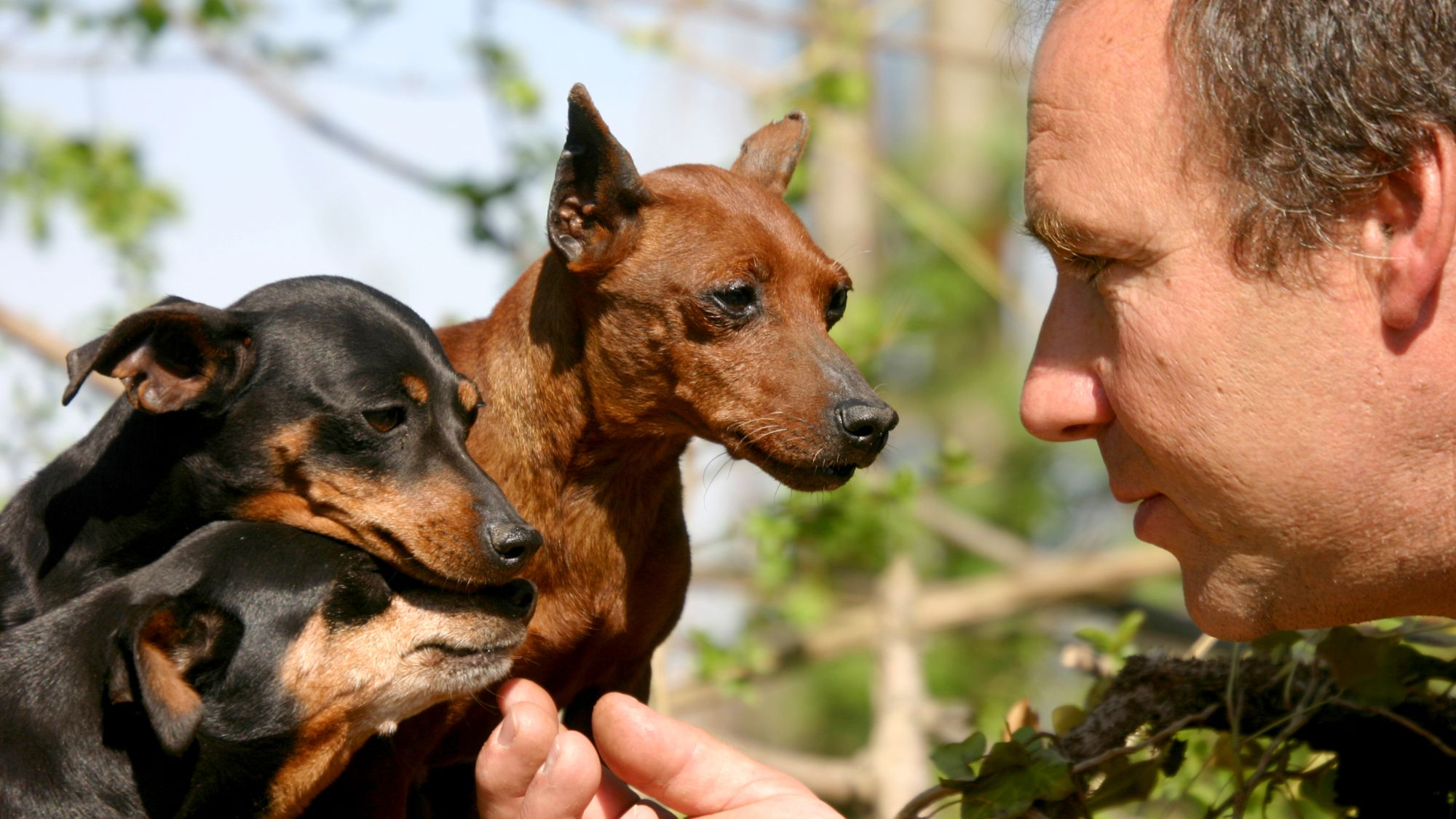
Get to know the Miniature Pinscher
All you need to know about the breed
Miniature Pinschers – Min Pins to their friends, of which there are plenty – are compact little bundles of energy, with inquisitive, lively expressions and a big personality to match. With their smooth dense coats, in shades of black, red or tan, big brown eyes and supersize ears, they have all the physical characteristics of the larger German Pinscher in a charming but feisty micro-format.
Miniature Pinschers were originally bred to catch rats, and have retained their prey instinct, so they need to be exercised on the lead or let off in a safe enclosed space. Once trained, they should be fine with other dogs or cats in their own household.
Their small stature means Miniature Pinschers are ideally suited to living in an apartment, although they are energetic dogs and they do need to be taken out regularly for walks or play sessions. Miniature Pinschers have alpha personalities, so owners need to make sure they show them who is pack leader (FYI, that should be you) through early, patient and positive training.
Miniature Pinschers make eager, alert and fearless watchdogs, ready to let off a volley of barks if strangers approach their home. Just don’t tell them those strangers probably won’t be that scared by the diminutive barker.
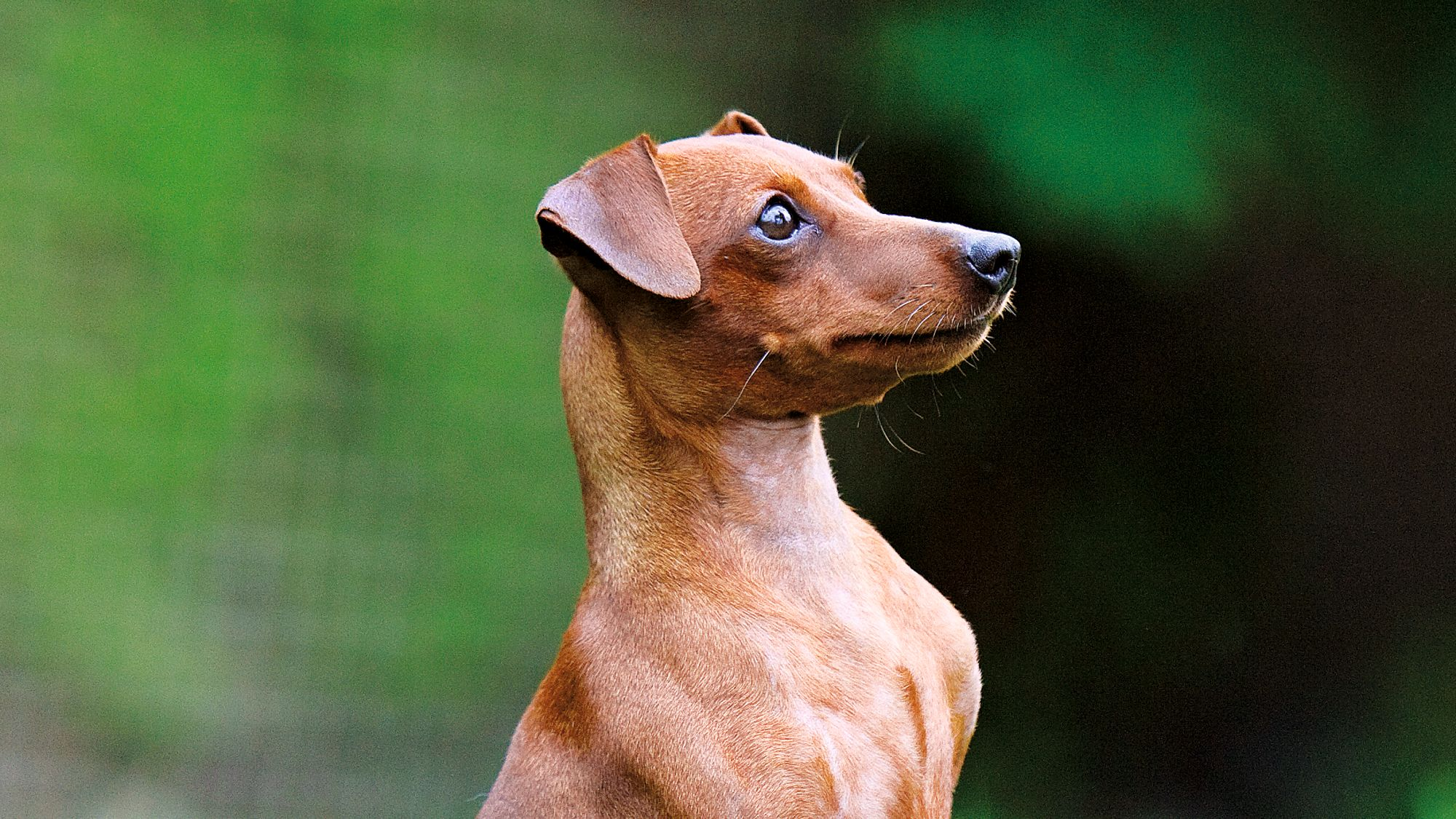
2 facts about Miniature Pinschers
1. Burrowing instinct
Being able to dig down into rat holes used to be vital for their mission, so burrowing is second nature to Miniature Pinschers. Don’t be surprised if you find them digging into their beds or blankets. Another throwback to their early days as rat-hunters comes in the form of their propensity to chew their toys.
2. Hackney carriage
Miniature Pinschers are known for their high-stepping “hackney” gait, so-called because of its resemblance to a trotting Hackney horse, the breed that was developed to pull carriages and which is also known for its exaggerated step. Just on a slightly bigger scale.
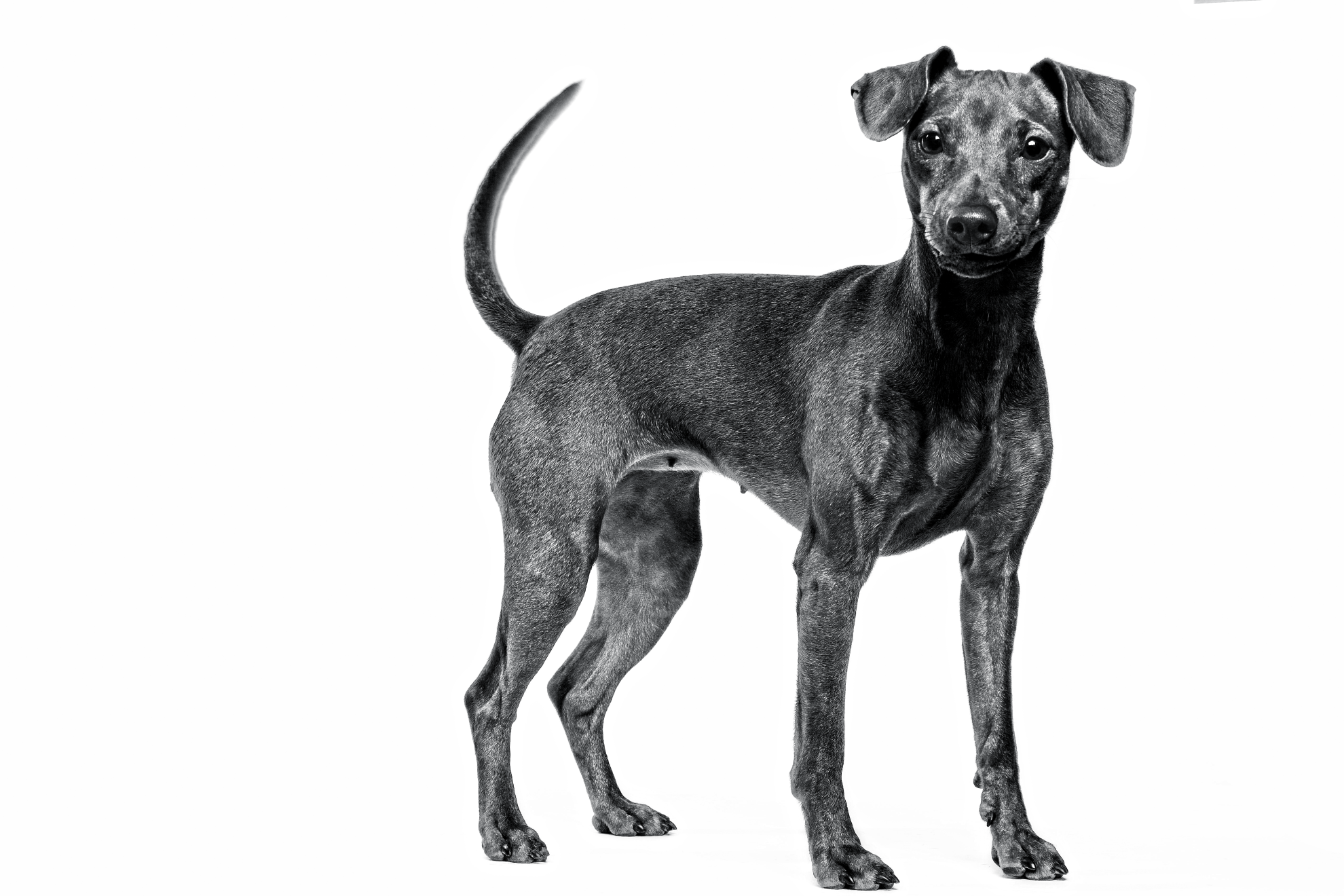
History of the breed
Miniature Pinschers may look like tiny Doberman Pinschers but in fact the two breeds are separate. They do share a common ancestor, the German Pinscher, but the Miniature Pinscher is the older breed.
The exact history of the Miniature Pinscher breed is unclear, but it is thought these dogs, sometimes known as “King of Toys”, are the result of crosses between German Pinschers, Italian Greyhounds and Miniature Dachshunds going back several hundred years. Whatever the breed ingredients, the Miniature Pinscher recipe was designed to create a small rat-hunter, able to dig and burrow into the earth to catch its prey.
Miniature Pinschers have left their vermin-catching days behind them, and their popularity as pets began to grow from the early part of the 20th century. Miniature Pinschers’ combination of dinky size – ideal for apartment-dwellers – and perky personality, means they’re still popular today.
From head to tail
Physical characteristics of Miniature Pinschers
1.Ears
2.Head
3.Body
4.Coat
5.Tail
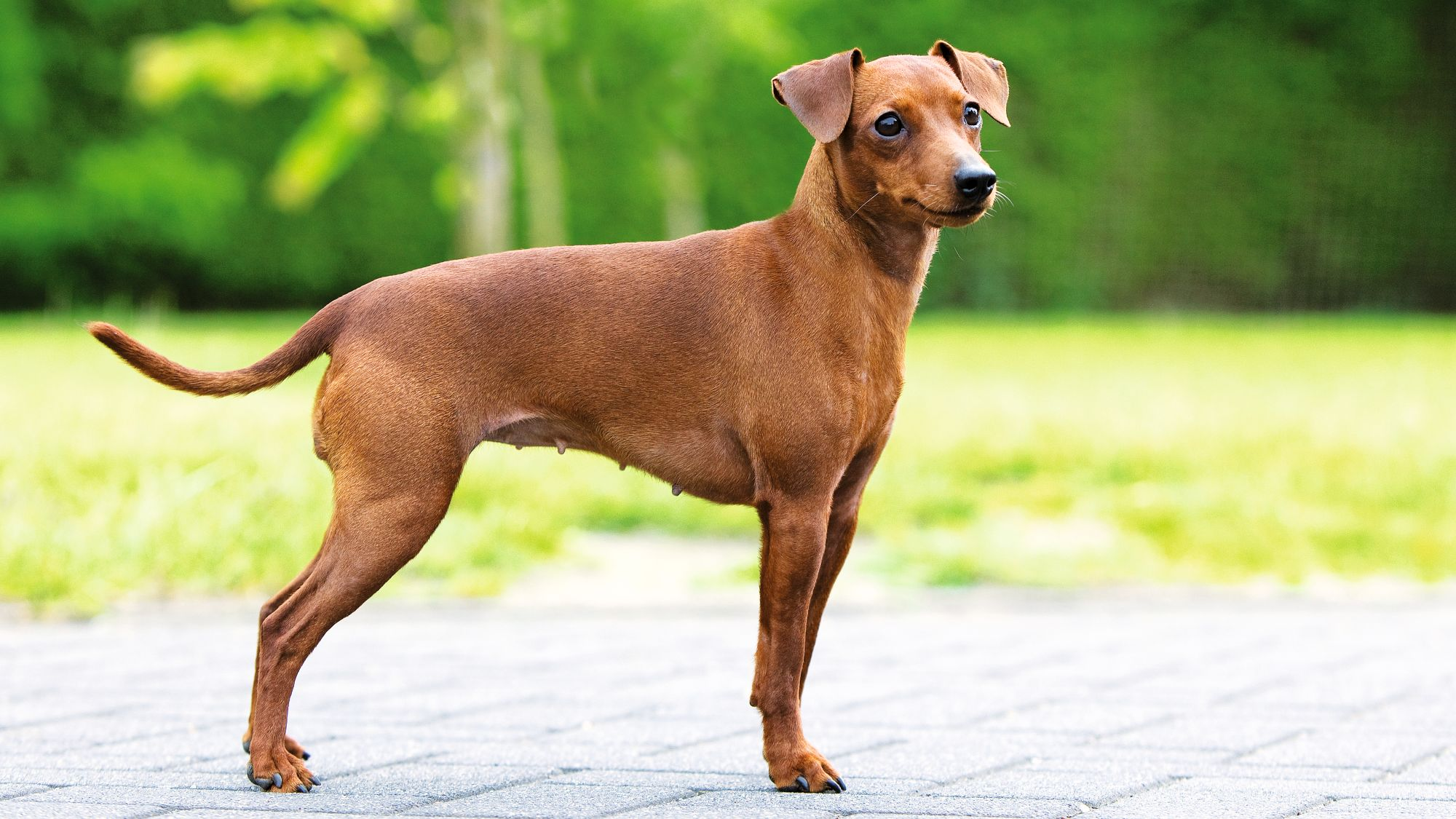
Things to look out for
From specific breed traits to a general health overview, here are some interesting facts about your Miniature Pinscher
Toy dog troubles
Like other toy breeds (the smallest category of dog breeds), Miniature Pinschers can be susceptible to Legg-Calve-Perthes disease, a degeneration of the head of the femur which manifests itself through limping but can be corrected with surgery. Patellar luxation, a disorder of the knee joint, can also be a problem for small dogs like the Miniature Pinscher. Regular check-ups with the vet will ensure any problems are diagnosed early for the most effective treatment.
Min Pin-proofing
Miniature Pinscher aficionados suggest dog-proofing your home as you would for a crawling baby or toddler. Check your garden if you have one for holes in the fence and other escape routes and be sure to put away small objects that could hurt or poison your inquisitive canine companion if they tried to investigate (for which read eat) it.
Healthy diet, healthier dog
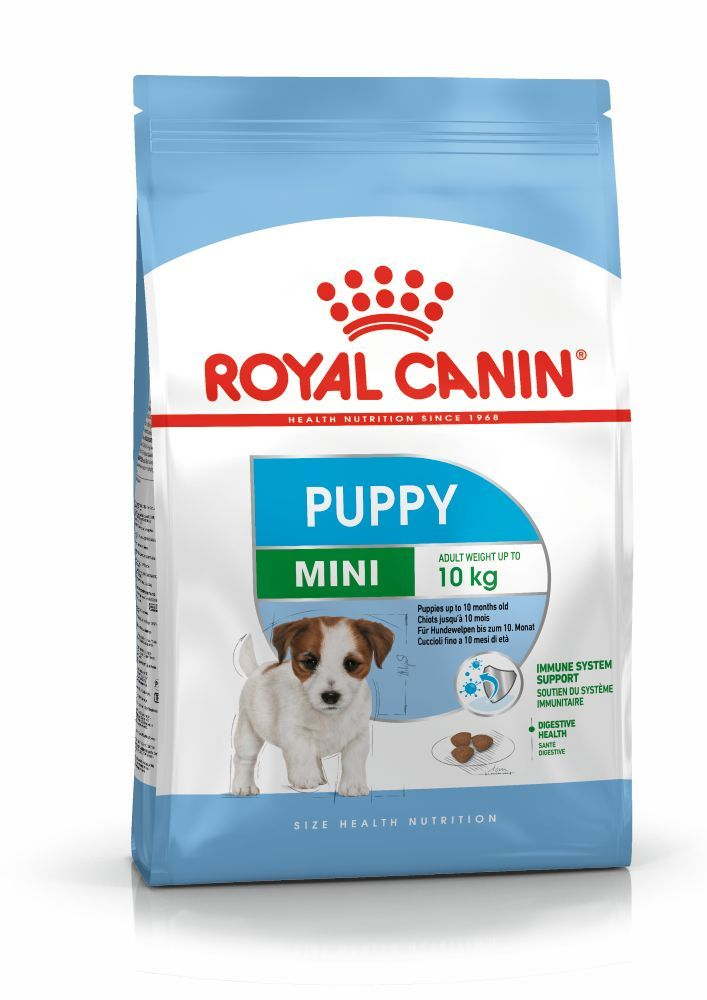
When choosing food for a Miniature Pinscher, there are many factors to consider: Their age, lifestyle, activity level, physiological condition, and health including potential sickness or sensitivities. Food provides energy to cover a dog’s vital functions, and a complete nutritional formula should contain an adjusted balance of nutrients to avoid any deficiency or excess in their diet, both of which could have adverse effects on the dog.
Clean and fresh water should be available at all times to support good urinary regularity. In hot weather and especially when out exercising, bring water along for your dog’s frequent water breaks.
The following recommendations are for healthy animals. If your dog has health problems, please consult your veterinarian who will prescribe an exclusively veterinary diet.
A Miniature Pinscher puppy’s requirements, in terms of energy, protein, minerals and vitamins, are much greater than those of an adult dog. They need energy and nutrients to maintain their body, but also to grow and build it. Until they are 10 months old, a Miniature Pinscher puppy’s immune system develops gradually. A complex of antioxidants – including vitamin E – can help support their natural defences during this time of big changes, discoveries, and new encounters. Their digestive functions are different from an adult Miniature Pinscher’s, too: Their digestive system is not mature yet so it’s important to provide highly-digestible proteins that will be effectively used. Prebiotics such as fructo-oligosaccharides, support digestive health by helping balance the intestinal flora, resulting in good stool.
Similarly, a puppy’s teeth – starting with the milk teeth, or first teeth, then the permanent teeth – are an important factor that needs to be taken into account when choosing the size, form, and hardness of kibble. This intense growth phase also means high energy needs, so the food must have a high energy content (expressed in Kcal/100g of food), while concentrations of all other nutrients will also be higher than normal in a specially-formulated growth food. It is recommended to split the daily allowance into three meals until they are six months old, then to switch to two meals per day.
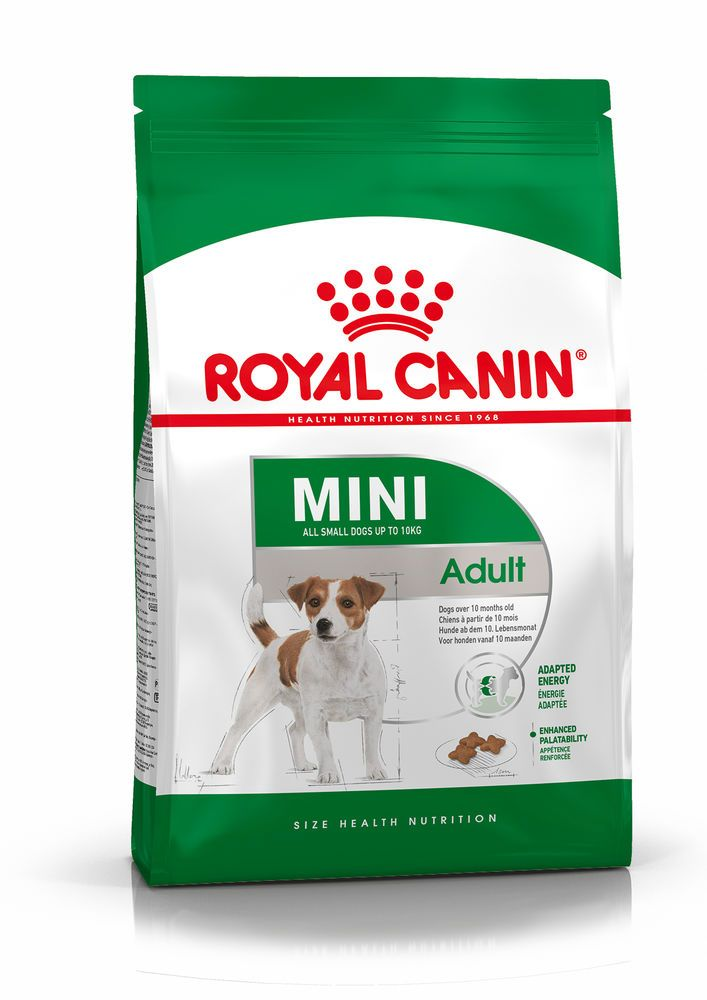
The main nutritional goals for adult Miniature Pinscher are:
Maintaining an ideal body weight by using highly-digestible ingredients and keeping the fat content at a sensible level. Preserving the health and beauty of the skin and coat with the enriched addition of essential fatty acids (especially EPA and DHA), essential amino acids, and B vitamins.
At adult age, small breed dogs are exposed to oral and dental disorders, more precisely, accumulation of dental plaque and tartar. The Miniature Pinscher’s teeth and jaws need a lot of protection. A kibble shape and a texture designed to promote chewing can help in slowing down the formation of dental plaque, and a formula containing calcium chelators can help reduce tartar formation, hence helping to support daily oral hygiene. Small breed dogs are well known for being fussy eaters. Exclusive formula and flavourings, as well as a kibble size with a special texture, will stimulate their appetite. Small breed dogs are prone to urinary stones; a diet that supports a healthy urinary system is recommended.
For Miniature Pinschers living mainly indoors, highly-digestible proteins, an appropriate fibre content, and very high-quality carbohydrate sources will help reduce faecal smell and volume. Because an indoor lifestyle often means less exercise, an adapted calorie content, which meets the reduced energy needs, and a diet that contains L-carnitine, which promotes fat metabolism, can help maintain an ideal weight. It is important to avoid feeding them human foods or fatty snacks. Instead, reward your dog with kibble taken from their daily meal allowance, and strictly follow the feeding guidelines written on the package in order to prevent excessive weight gain.
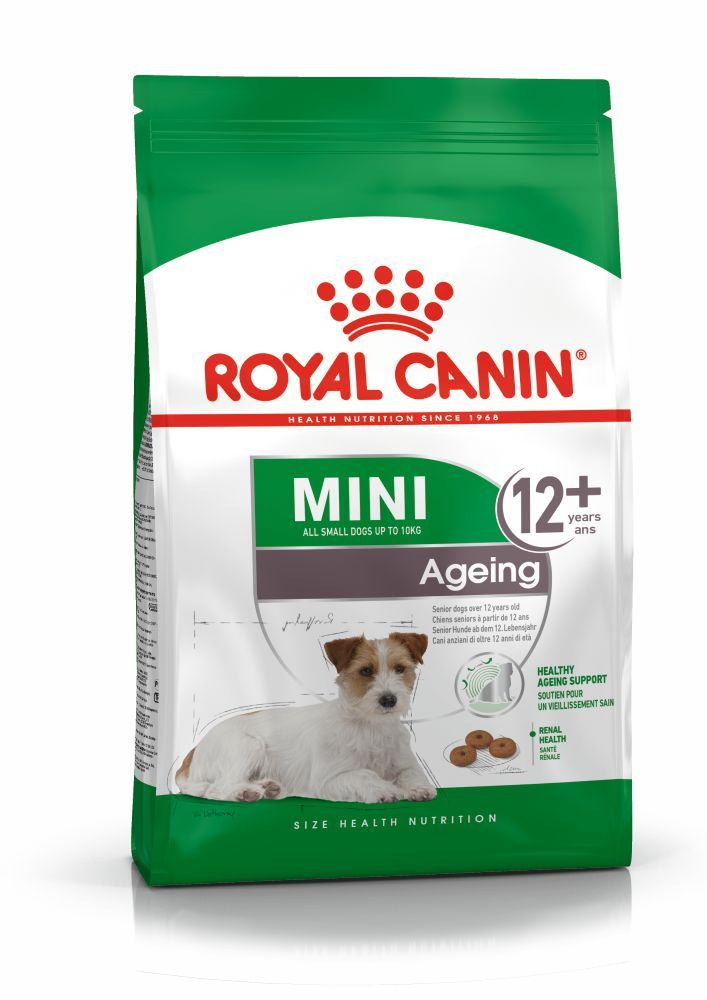
After eight years old, Miniature Pinschers start facing the first signs of ageing. A formula enriched with antioxidants will help maintain their vitality and an adapted phosphorus content will support their renal system. Ageing is also accompanied by the modification of digestive capacities and particular nutritional requirements, so food for older Miniature Pinschers should have the following characteristics:
Higher vitamin C and E content. These nutrients have antioxidant properties, helping to protect the body’s cells against the harmful effects of the oxidative stress linked to ageing. High-quality protein. Contrary to a widely held misconception, lowering the protein content in food brings little benefit in limiting kidney failure. In addition, older dogs are less efficient at using dietary protein than younger dogs. Reducing the phosphorus content is a good way of slowing down the gradual deterioration of kidney function. A higher proportion of the trace elements iron, copper, zinc, and manganese to help maintain the good condition of the skin and coat. A higher quantity of polyunsaturated fatty acids to help maintain the quality of the coat. Dogs can normally produce these fatty acids, but ageing can affect this physiological process. As they age, dogs increasingly suffer from teeth problems. To ensure they continue to eat in sufficient quantities, the shape, size, and hardness of their kibble needs to be tailored to their jaw.
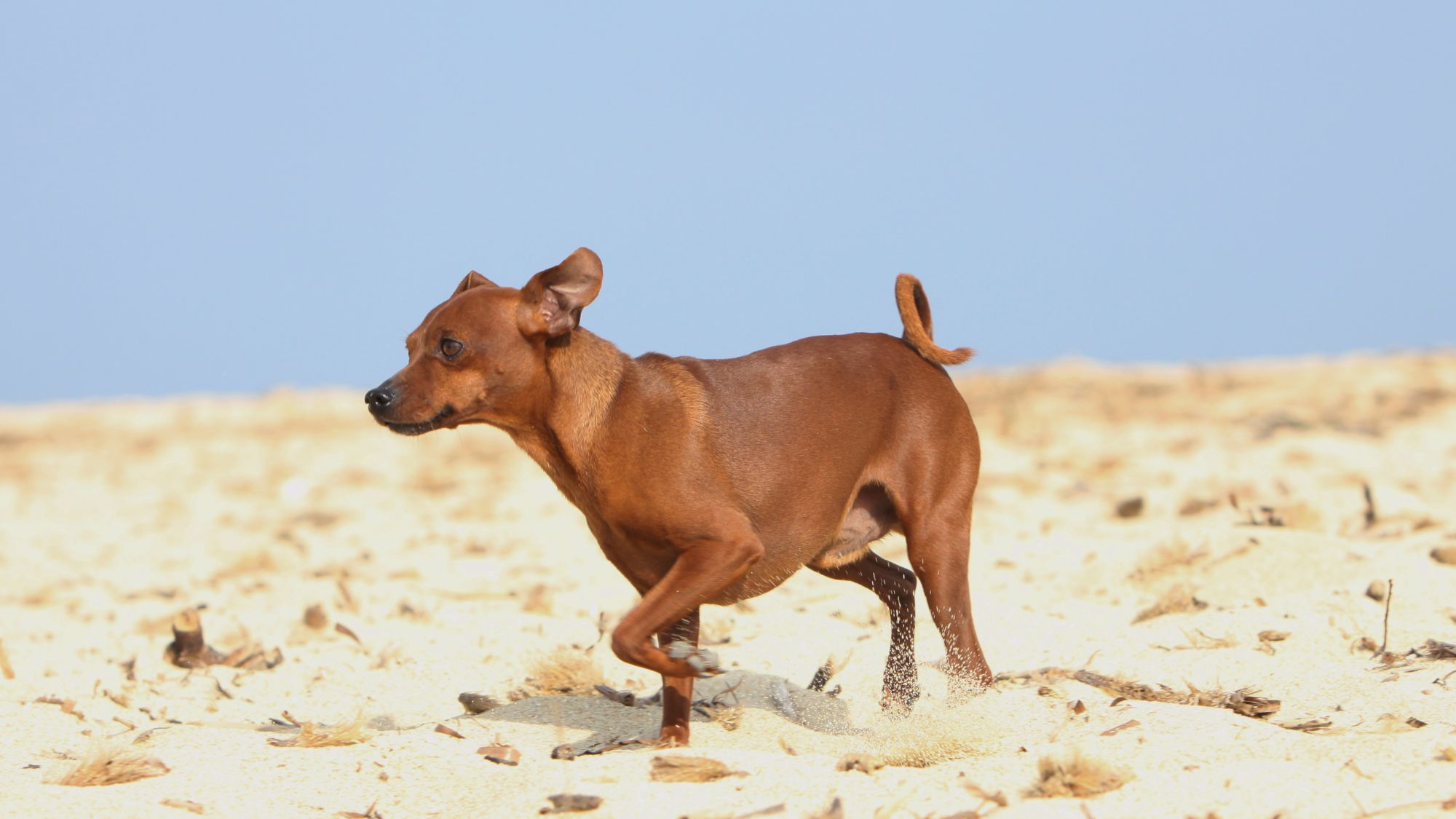
Caring for your Miniature Pinschers
Grooming, training and exercise tips
7/7
All about Miniature Pinschers
While we can’t speak for all of them, these little bundles of energy seem to enjoy a cuddle—if they can sit still long enough that is. One way to encourage this is through brushing from an early age. Even if their coats are pretty low maintenance, the ritual is good for bonding. And they’re just the right size to sit on their humans’ laps for a snuggle.
Because they are so small, Miniature Pinschers don’t thrive in families with very young children who might accidentally hurt them and certainly tower over them. And they’re a breed best avoided if you also have small pets such as hamsters—that chasing instinct runs deep. But once trained these dogs make a fun, lively and loyal addition to a family with older kids.
Suggested Breeds
Read more on this topic
- Veterinary Centers of America https://vcahospitals.com/;
- Royal Canin Dog Encyclopaedia. Ed 2010 and 2020
- Banfield Pet Hospital https://www.banfield.com/
- Royal Canin BHN Product Book
- American Kennel Club https://www.akc.org/
Like & share this page